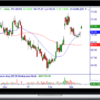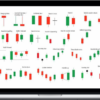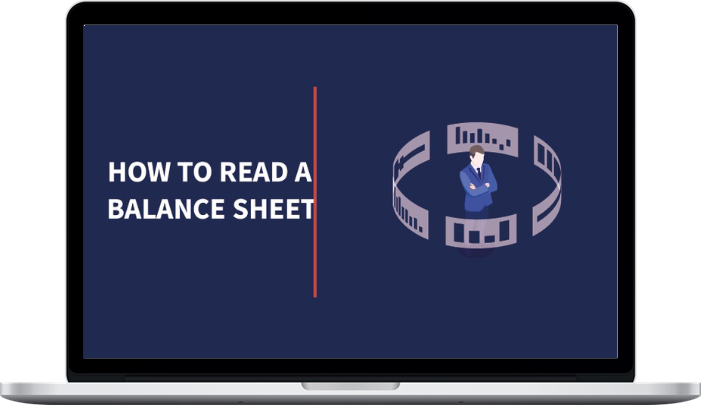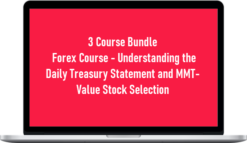Stephen Clapham – How to Read a Balance Sheet (and the other statements)
$499.00 $399.00
Delivery: Within 7 days
Description
Stephen Clapham – How to Read a Balance Sheet (and the other statements)
What you need to know to understand company accounts
How to Read a Balance Sheet is an ideal course for anyone wanting to understand a company’s report and accounts. Whether you are
- an investor, seeking to make your fortune in the stock market but protect yourself against fraudsters, or
- a middle manager trying to climb the ladder to the boardroom, or
- a student, trying to make sense of all the jargon
when you have completed this course, you will understand the jargon, be able to tell the difference between a pension liability and a provision, and know whether a company is truly a quality business – profitable, high returns and cash generative.
The value of this course is it has been prepared by an experienced investment practitioner for the lay person. This course does not mention debts or credits, not once, we promise. You dont need to know how to prepare a set of accounts, you only need to be able to interpret them. You will emerge from this course confident that you can hold your own in any business or financial meeting. Your accountant will no longer be able to baffle you with jargon.
What You’ll Learn In How to Read a Balance Sheet
Welcome
- Welcome (3:49)
- What’s New
Module 1 – Introduction to Accounts I – Balance Sheet
- Welcome Video (2:13)
- Resources – Introduction to Accounts for Analysts
- Structure of the Course (6:58)
- Glossary
- First Things First – How to Approach the Accounts (3:40)
- Audit Report (8:12)
- Balance Sheet – Fixed Assets (11:36)
- Exercise – Fixed Assets
- Exercise – Fixed Assets: Suggested SOLUTION
- Bringing Operating Leases on Balance Sheet – IFRS 16 etc
- PreviewBalance Sheet – Goodwill (5:15)
- Balance Sheet – Other Long Term Assets (4:33)
- Exercise – Intangibles
- Exercise – Intangibles: Suggested SOLUTION
- Balance Sheet – Current Assets (12:24)
- Balance Sheet – Current Liabilities (5:17)
- Balance Sheet – Longer Term Liabilities: Pensions (3:27)
- Exercise: Pensions
- Exercise – Pensions: Suggested SOLUTION (3:14)
- Balance Sheet – Longer Term Liabilities (3:00)
- Equity and Other Comprehensive Income Statement (2:19)
- Balance Sheet Wrap-up (0:56)
- Related Party Transactions (5:58)
- Concluding Video (0:40)
Module 2 Introduction to Accounts II – P&L
- Welcome Video (0:54)
- Module Introduction (0:45)
- P&L – Revenue (6:22)
- P&L – Gross Margin (2:52)
- Exercise – Gross Margin
- Exercise – Gross Margin: Suggested SOLUTION
- P&L – Expenses (5:31)
- P&L – Margins (2:56)
- Exercise – Expenses and Margins
- Exercise – Expenses and Margins: SOLUTION
- P&L – Interest (3:57)
- P&L – Other (2:37)
- P&L- non-GAAP (3:02)
- Stock Based Compensation
- P&L – Wrap-up (0:46)
- Concluding Video (0:33)
Module 3 Introduction to Accounts III – Cash Flow
- Welcome Video (1:01)
- Introduction to the Cash Flow Statement (0:42)
- Structure of Cash Flow Statement (2:37)
- Operating Cash Flow – Ontex Example (6:06)
- Exercise – Depreciation
- Exercise – Depreciation: Suggested Solution
- Cash from Investing (3:03)
- Cash from Financing (4:05)
- Buying Assets with Paper (4:38)
- PreviewAmazon’s Cash Flow – A Critical Review
- Acquisitions in the Cash Flow – Worked Example (7:30)
- Exercise – Cash Flow
- Exercise – Cash Flow: Suggested Solution
- Wrap up (0:53)
- Concluding Video (1:05)
Module 4 Introduction to Accounts IV – Accounting Policies
- Welcome Video (1:15)
- Introduction to Accounting Policies (4:28)
- Accounting Policies 2 – Changes (16:38)
- Accounting Policies 3 – FX Rates etc (5:15)
- Accounting Policies 4 – Revenue Recognition etc (5:11)
- Accounting Policies 5 – Other Issues and Materiality (2:18)
- Accounting Policies 6 – APMs (2:06)
- Accounting Policies 7 – Things to Watch Out For (1:26)
- Accounting Policies 8 – Wrap-up (0:28)
- Accounting Policies Exercise
- Concluding Video (1:11)
Module 5 Introduction to Accounts V – Accounting Shenanigans
- Welcome Video (0:50)
- Introduction to Shenanigans (6:50)
- Revenue Recognition Tricks (6:31)
- Cash Flow Manipulation (4:20)
- Tricks with Expenses (3:27)
- Balance Sheet and Wrap-up (4:37)
- Exercise – Samsonite
- Exercise – Samsonite: Suggested Solution
- Concluding Video (0:41)
Module 6 – Introduction to Accounts VI Financial Ratios
- Welcome Video (0:59)
- Resources
- Introduction to Financial Ratios (2:19)
- Approach to Ratios (3:52)
- P&L Ratios (6:15)
- Returns 1 – RoCE (6:33)
- Returns 2 – ROIC (5:22)
- Returns 3 – ROIC and CROCI (8:35)
- Working Capital Ratios (2:00)
- Liquidity Ratios (4:47)
- Solvency Ratios (5:54)
- Wrap-up on Ratios (0:51)
- Exercise – Financial Ratios
- Financial Ratios Exercise Solution
- Concluding Video (0:32)
Module 7 – Introduction to Analysis
- Welcome Video (1:03)
- Introduction to Analysis, Ratios and Other Tools (1:41)
- P&L – Internal and Revenue Analysis (2:51)
- Gross and EBIT Margin Trends (4:17)
- Margins vs Peers (4:49)
- Adjusted Earnings (1:17)
- Balance Sheet including Working Capital Ratios (5:11)
- Returns (1:36)
- Analytical Short Cuts (2:36)
- Wrap-Up (1:23)
- Closing Video (0:48)
Module 8 – Accounts Course Closing Module
- Closing Video (1:19)
Delivery Policy
When will I receive my course?
You will receive a link to download your course immediately or within 1 to 21 days. It depends on the product you buy, so please read the short description of the product carefully before making a purchase.
How is my course delivered?
We share courses through Google Drive, so once your order is complete, you'll receive an invitation to view the course in your email.
To avoid any delay in delivery, please provide a Google mail and enter your email address correctly in the Checkout Page.
In case you submit a wrong email address, please contact us to resend the course to the correct email.
How do I check status of my order?
Please log in to TradingAZ account then go to Order Page. You will find all your orders includes number, date, status and total price.
If the status is Processing: Your course is being uploaded. Please be patient and wait for us to complete your order. If your order has multiple courses and one of them has not been updated with the download link, the status of the order is also Processing.
If the status is Completed: Your course is ready for immediate download. Click "VIEW" to view details and download the course.
Where can I find my course?
Once your order is complete, a link to download the course will automatically be sent to your email.
You can also get the download link by logging into your TradingAZ account then going to Downloads Page.
Related products
Total sold: 3








